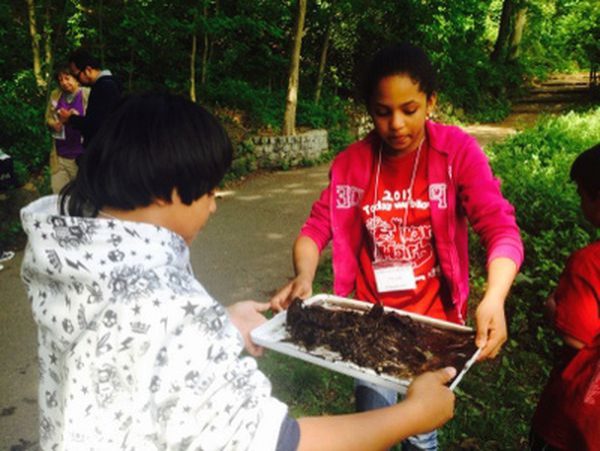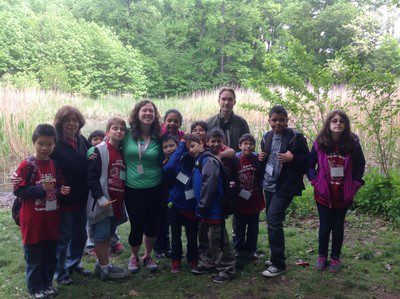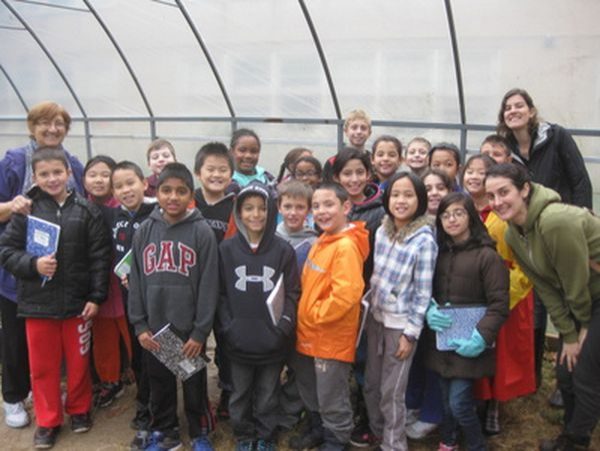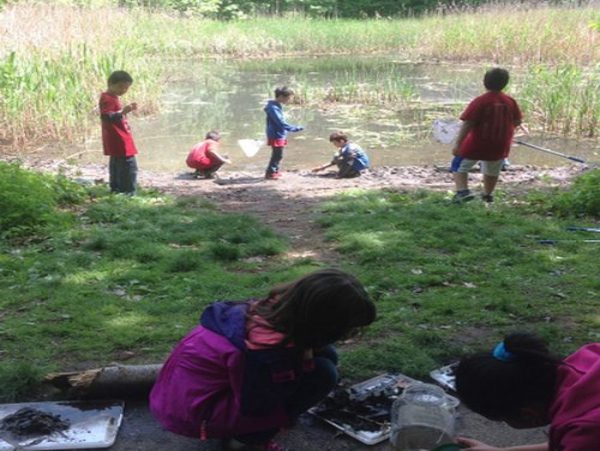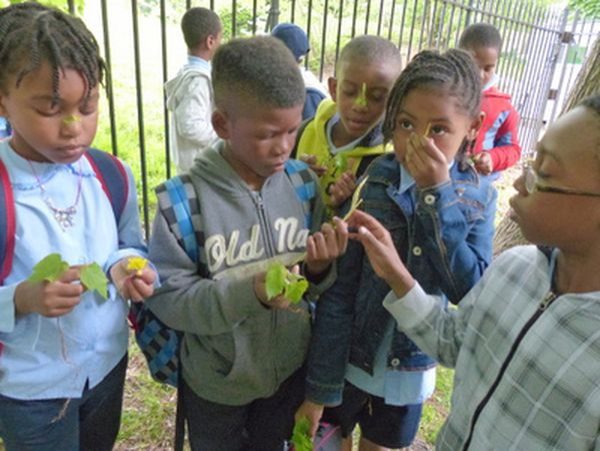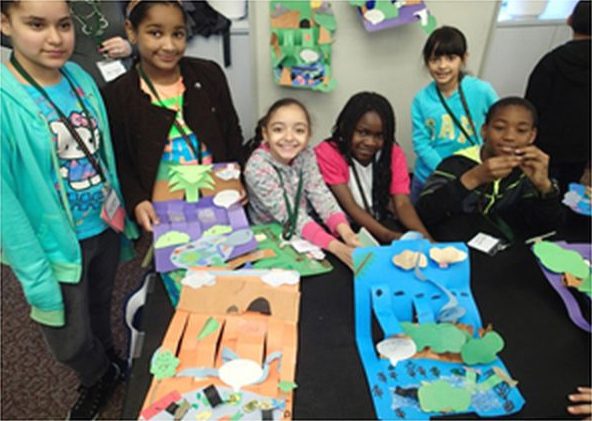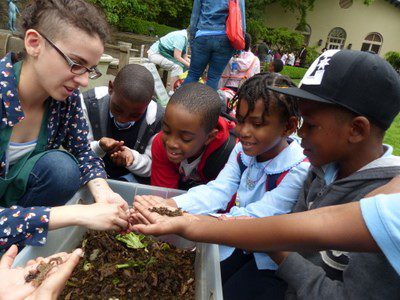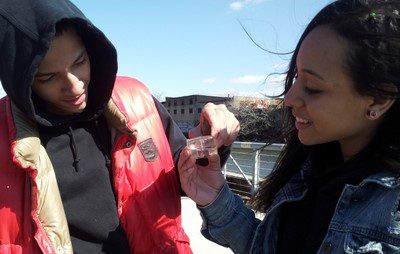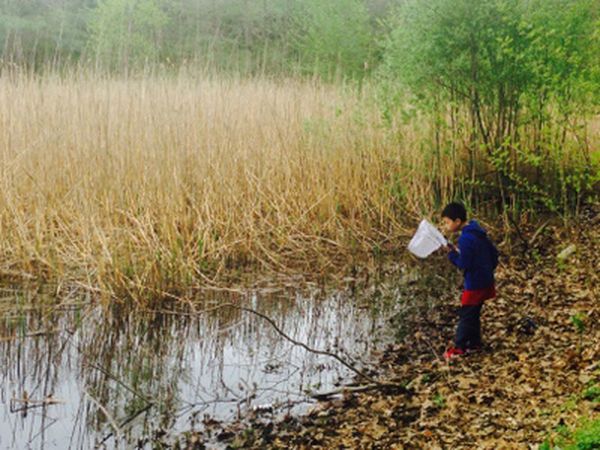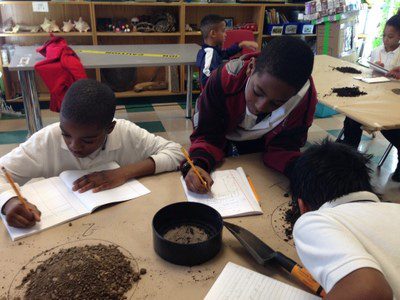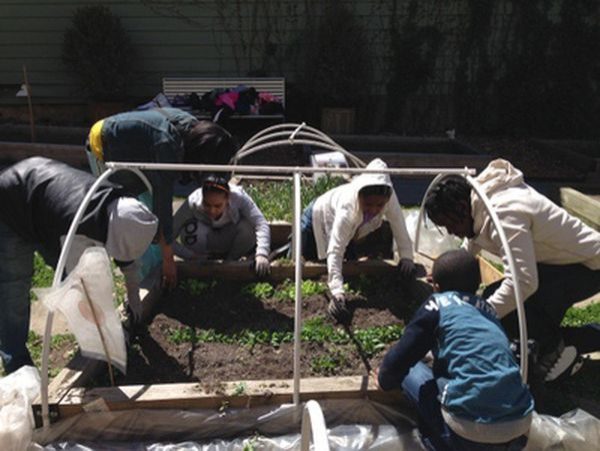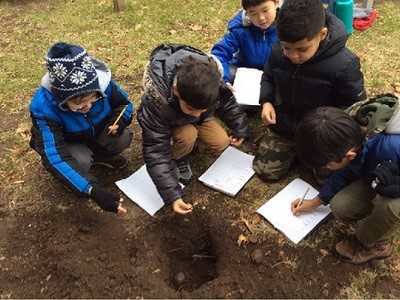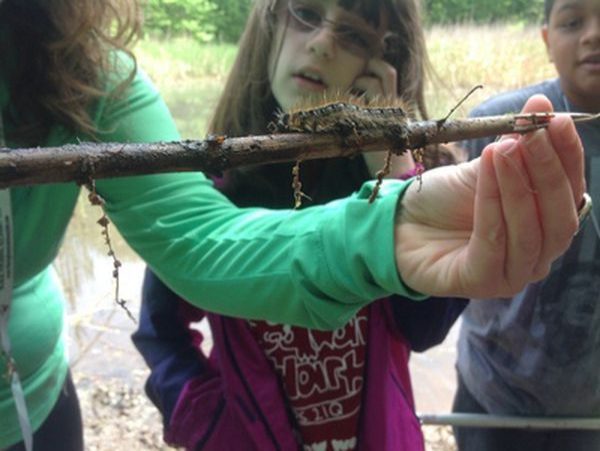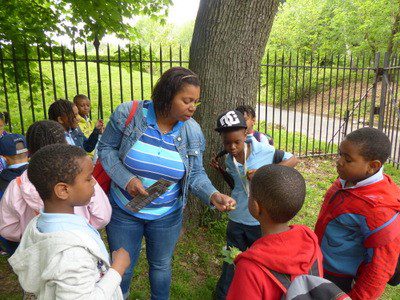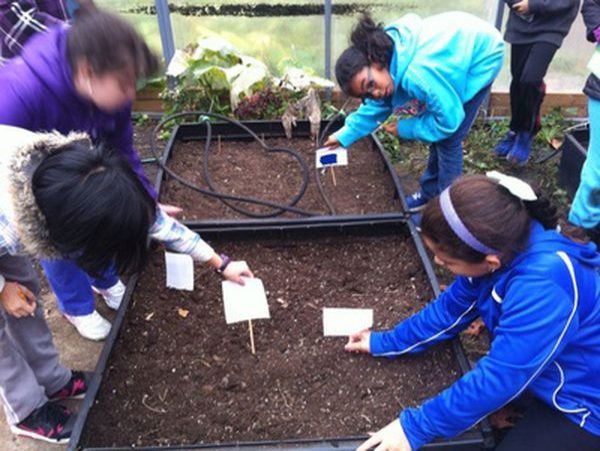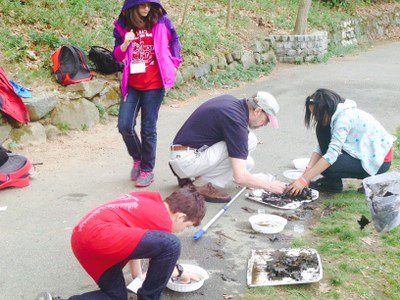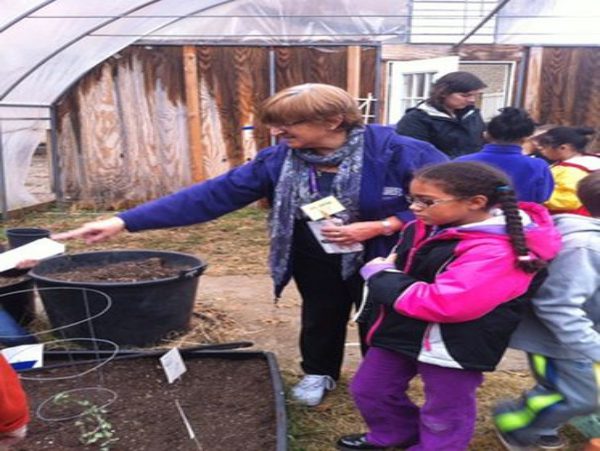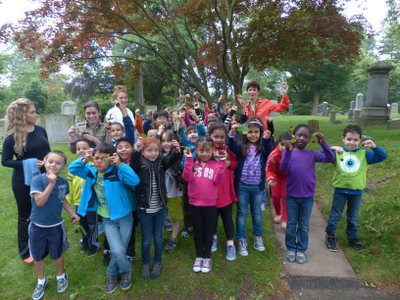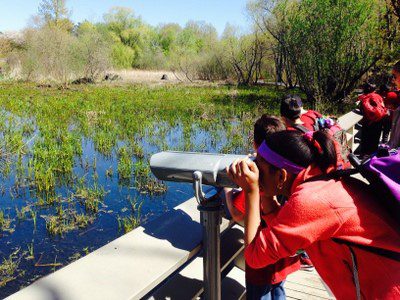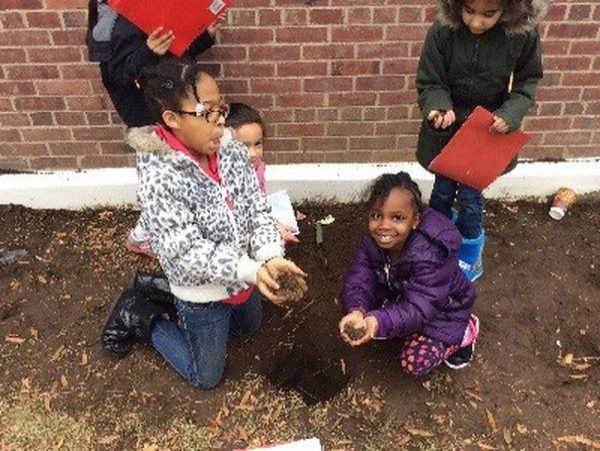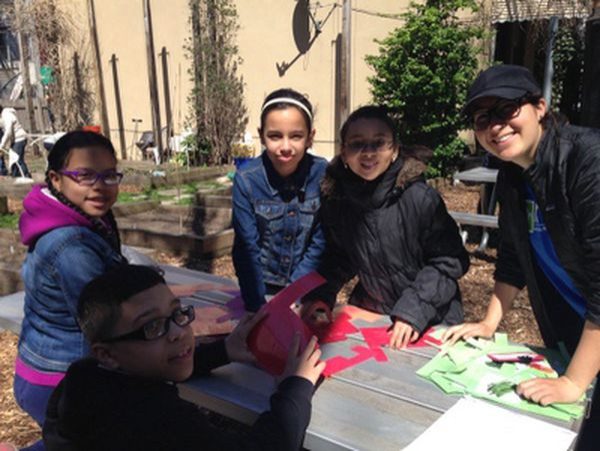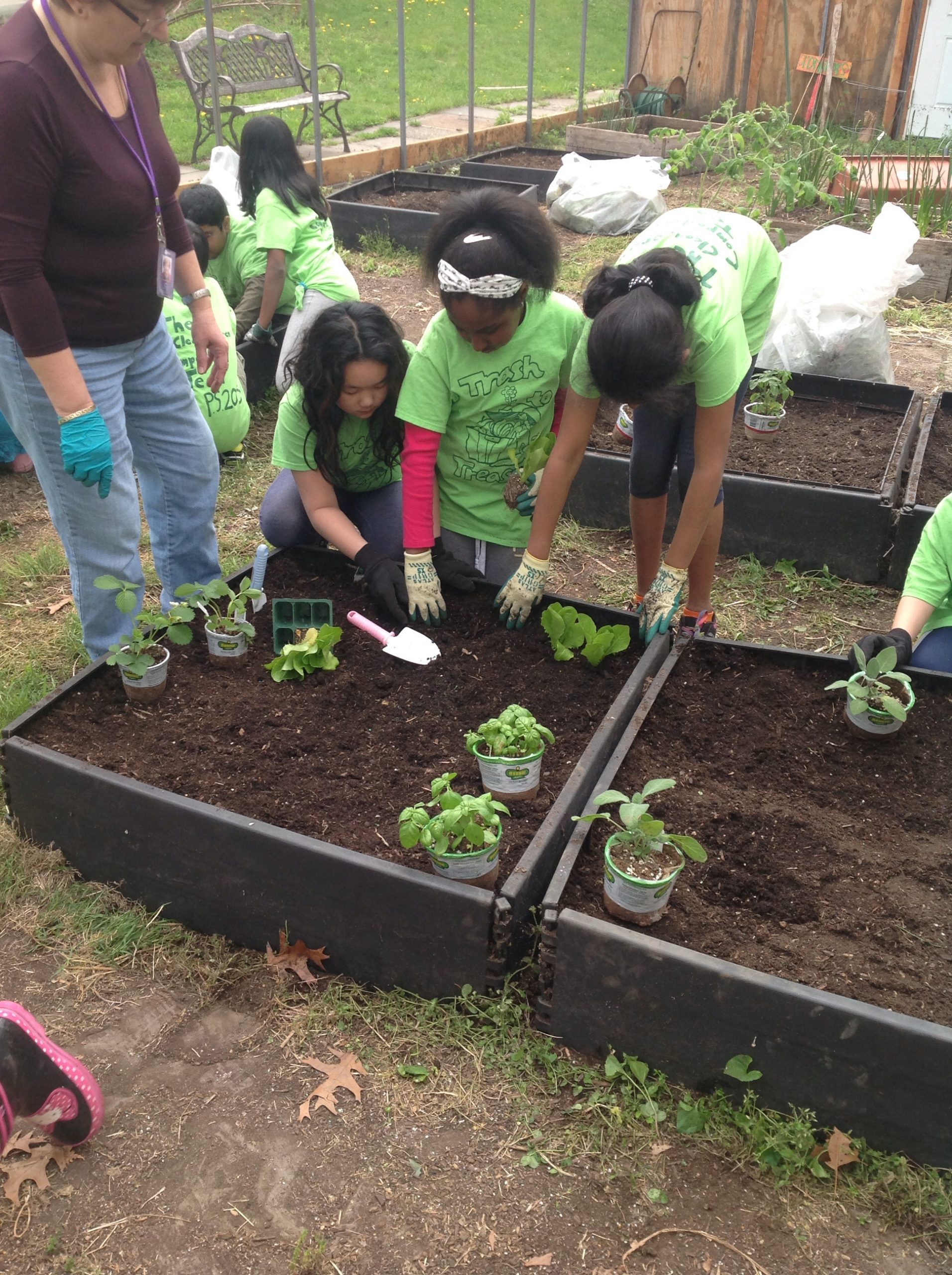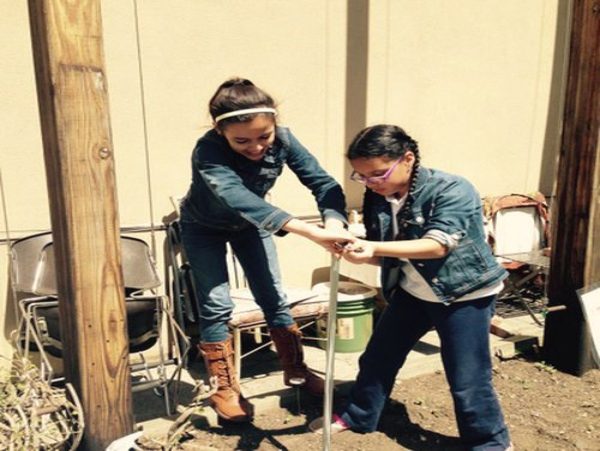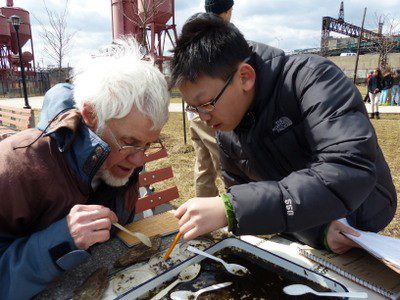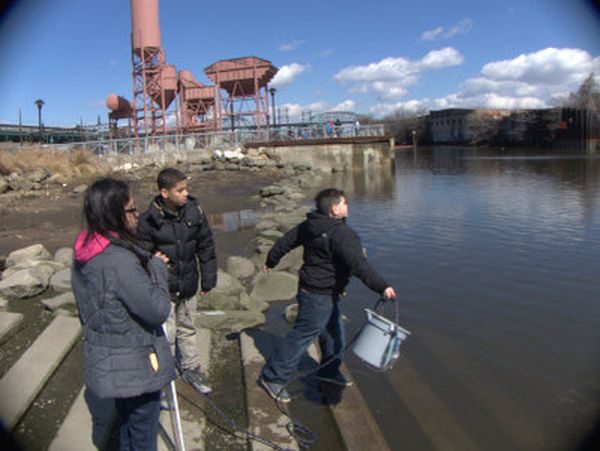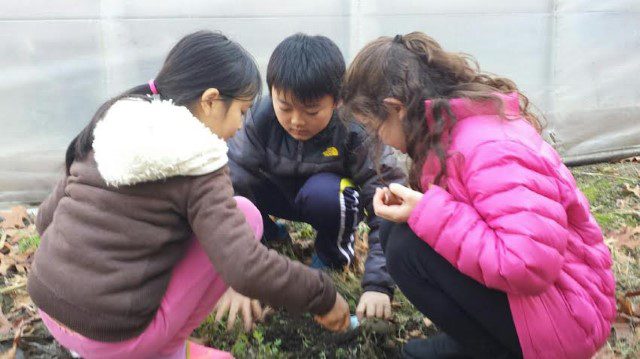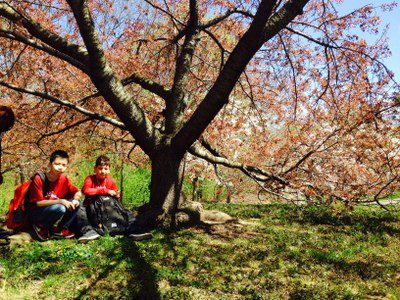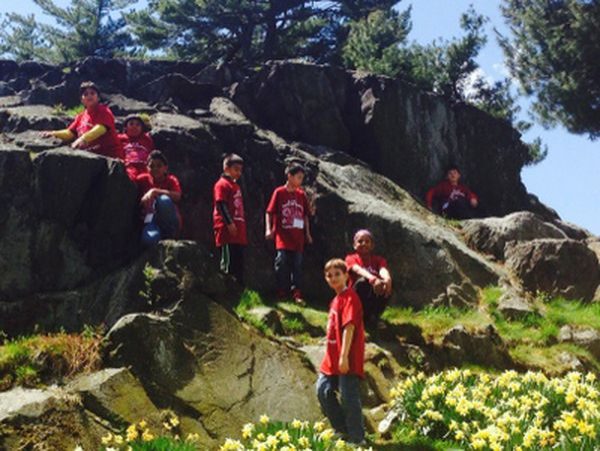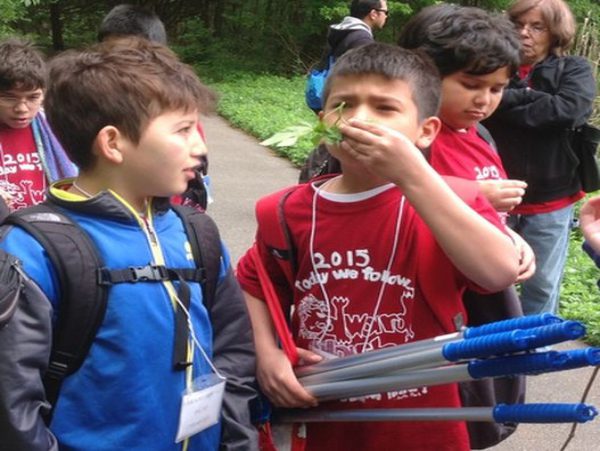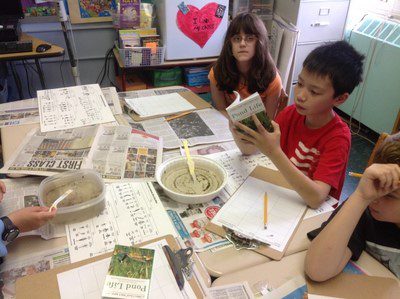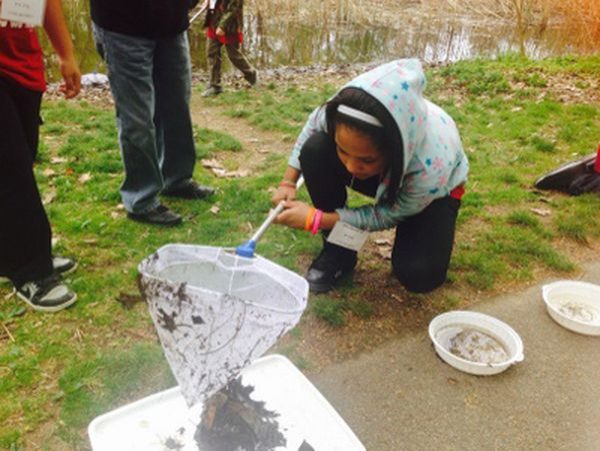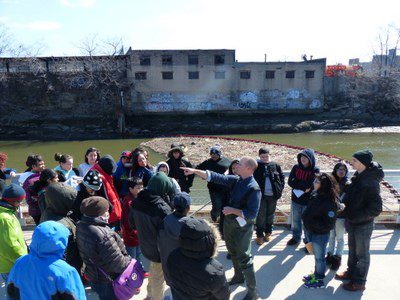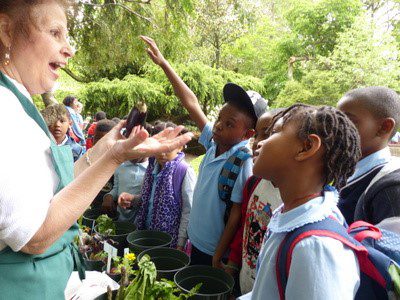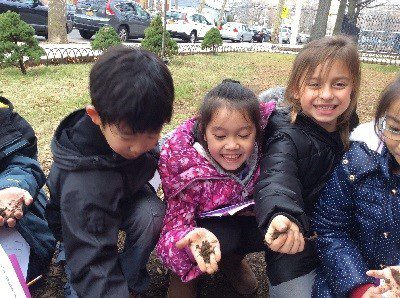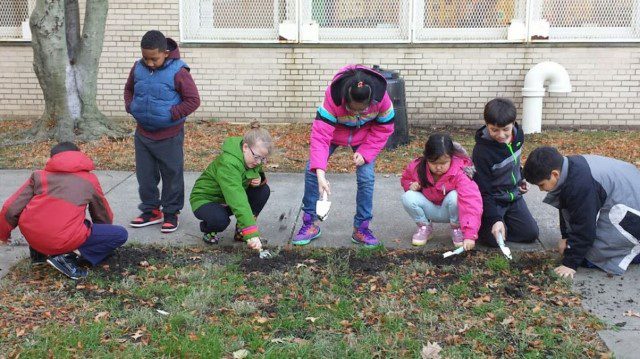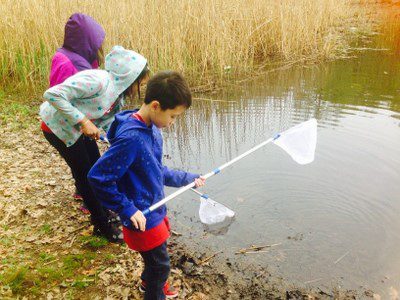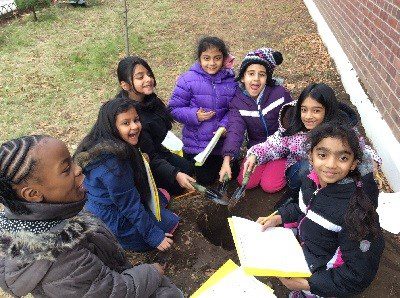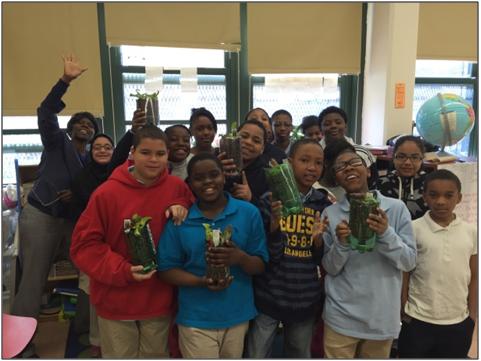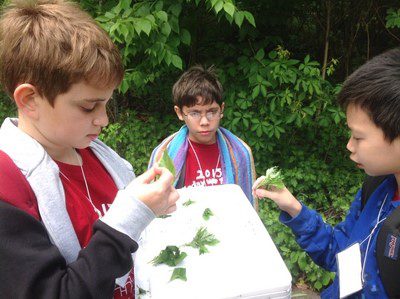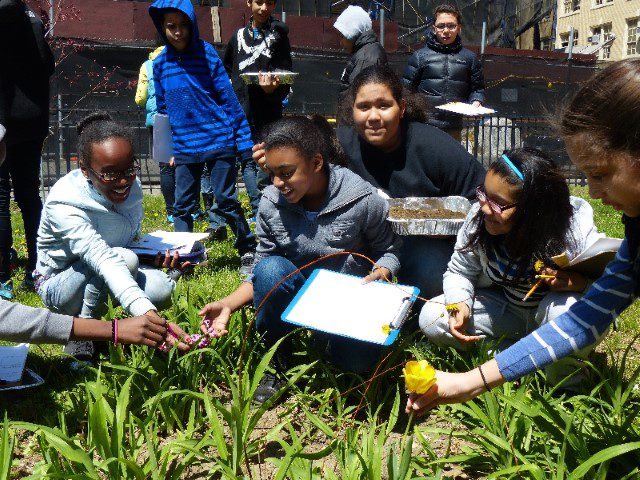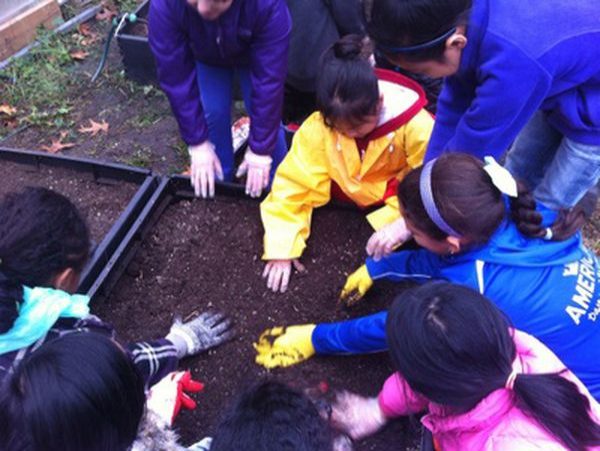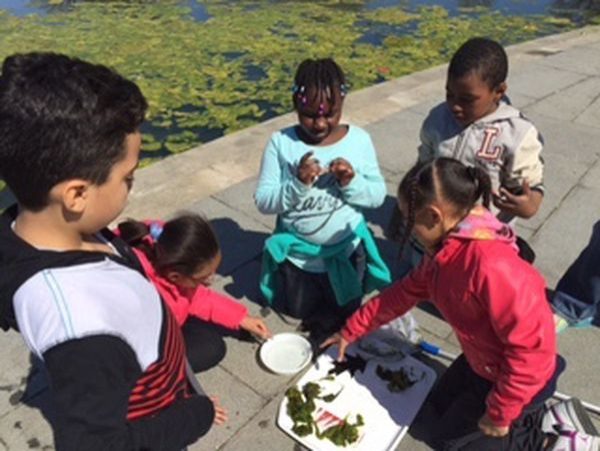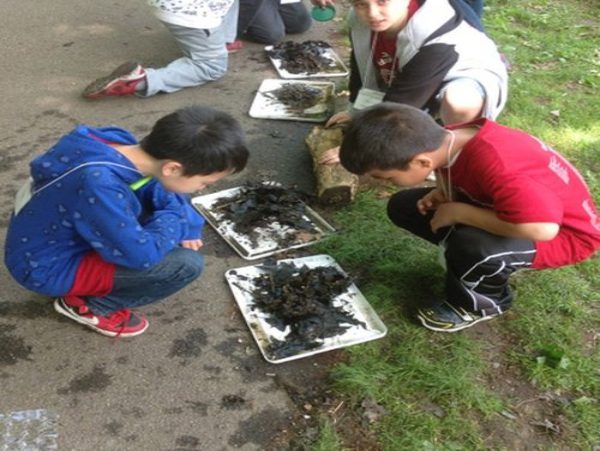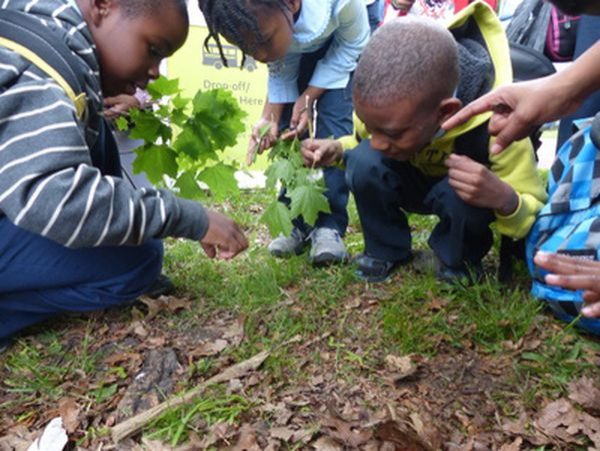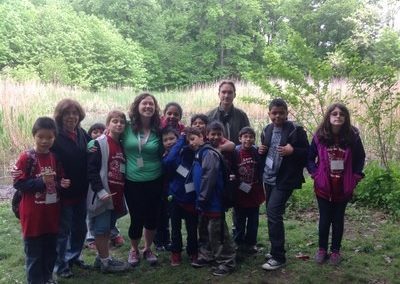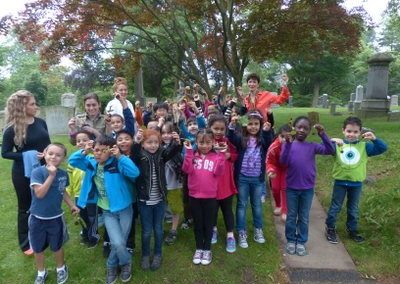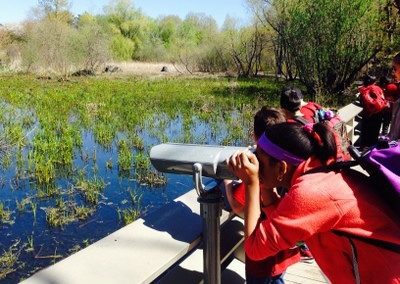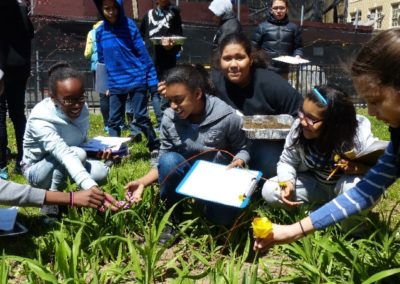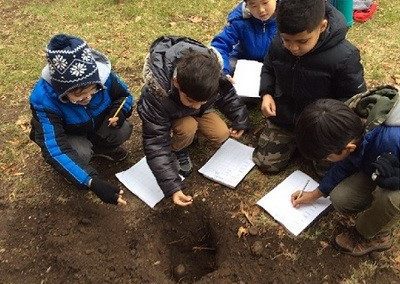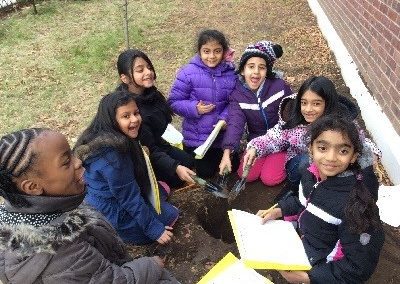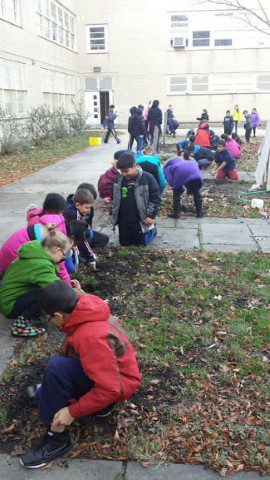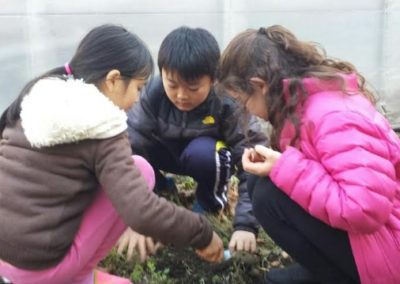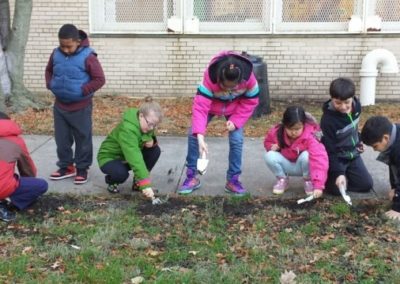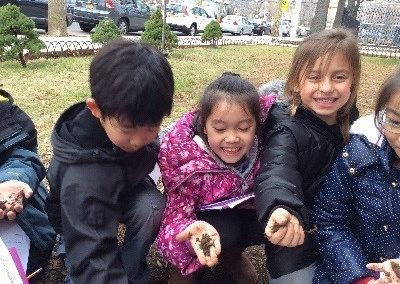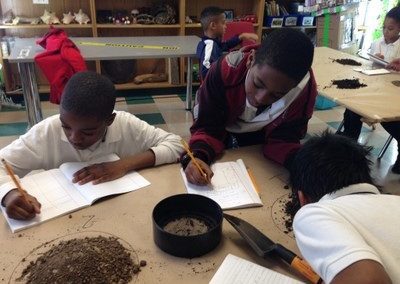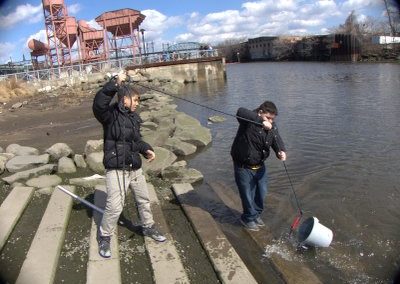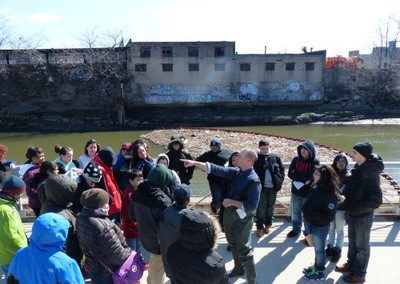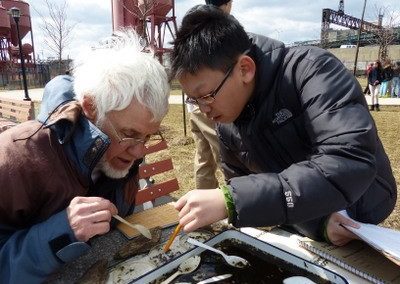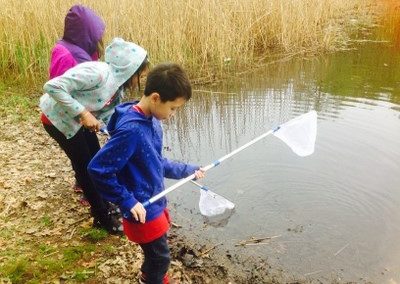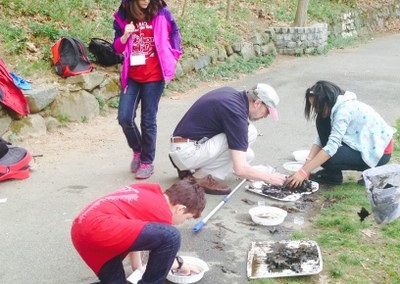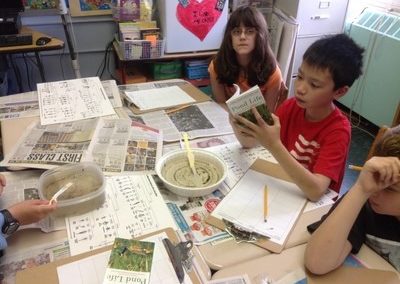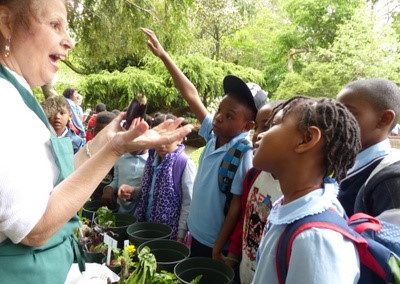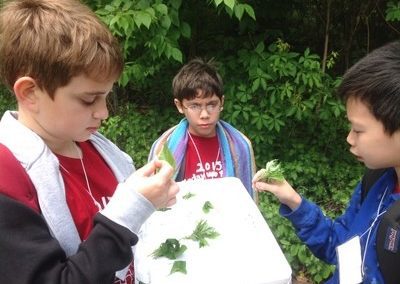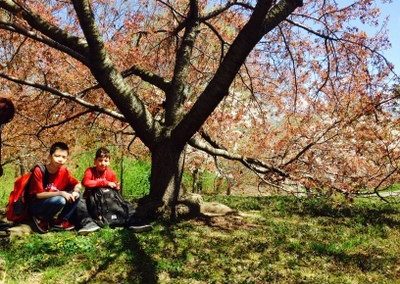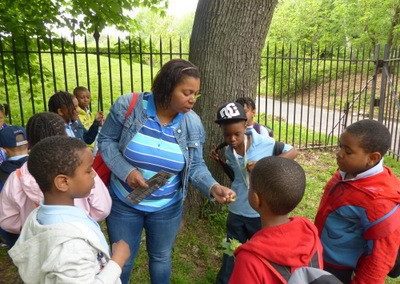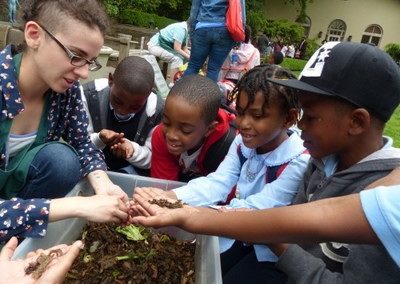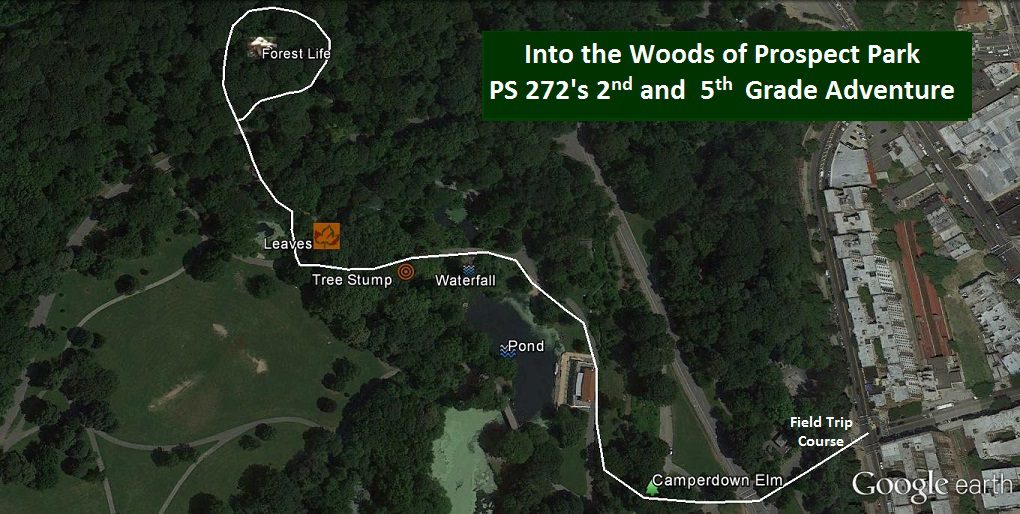Class Adventures
Last updated 1/8/18
Atmosphere
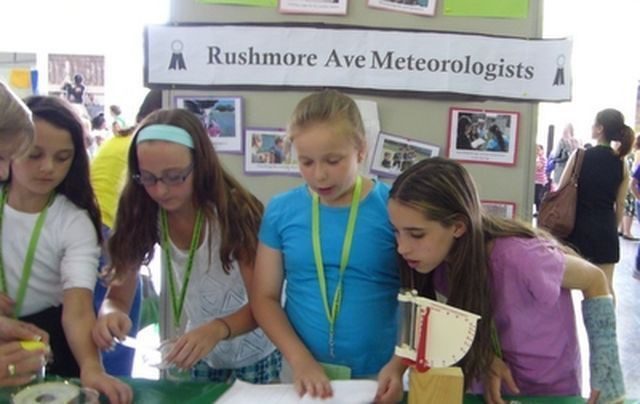
Rushmore Ave Meterologists Report on their Weather Station Research: Assessing Local and Regional Temperature Averages and Differences, Carles Place, NY
Stories from the Field to the Classroom
Adventure to Alley Pond Park
By Sam Adels, Dec. 2015
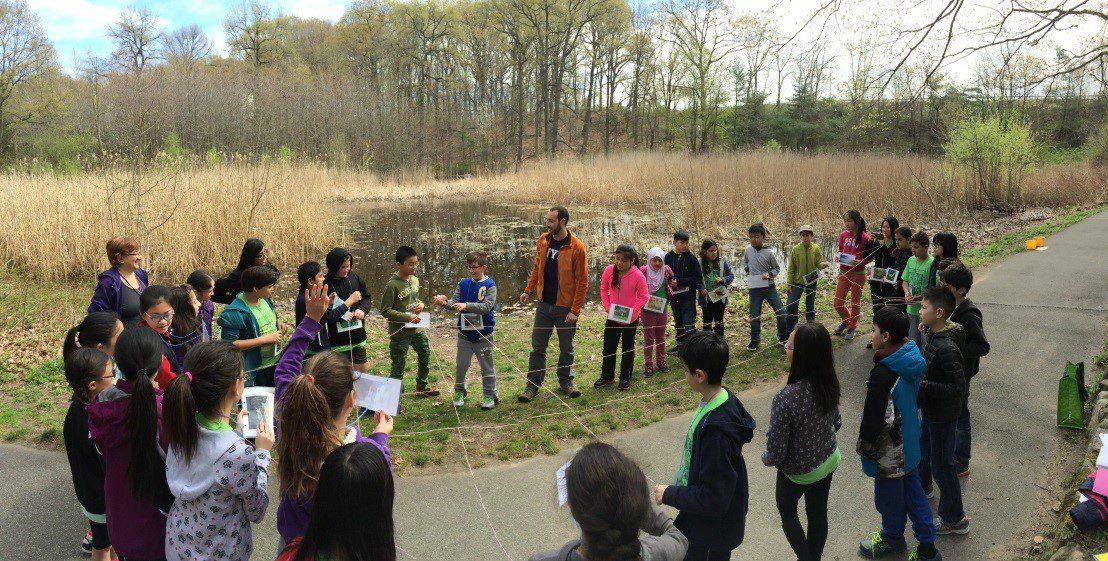
Ms. Shin’s 5th graders from PS 173 in Queens ventured out of the classroom and into the woods of Alley Pond Park to explore two of its ecosystems in late April 2015. Alley Pond Park is rich in biodiversity—especially bird life—because its land is so varied. The park, which is the 2nd largest in Queens, provides ample ecosystems for students to study and explore. Freshwater ponds, saltwater wetlands, tidal flats, meadows, and forests provide a perfect introduction to the study of ecological systems. Ms. Shin’s students visited a freshwater pond and hiked through the forest to observe the ecosystems and search for signs of spring. She reached out to the NYU Wallerstein Collaborative for Urban Environmental Education, who helped plan the trip and lead the trip. Professor Leou accompanied by environmental educators Sam Adels and Tania Goicoechea met the class and led them on their exploration of woodlands and wetlands.
The students first played an ecology game called “Web of Life,” which illustrates ecological relationships among organisms and their environment. Then half the class studied the freshwater pond while the other group hiked through the forest and then they switched. Students used buckets to examine pond life. They worked as a team filling buckets with mud and water from the pond to examine the life it contained. The students found numerous diving beetles and one snail, which were put into bug boxes for closer examination. Students saw lots of water striders and a spider walking on the surface of the water and two frogs. Overhead plenty of red winged blackbirds, which love wetlands, conversed. Field guides helped to identify the specimens. In the forest the students identified trees and wildflowers including the beautiful but invasive lesser celandine carpeting the area.
 They also made note of poison ivy emerging for the season and searched beneath logs for decomposers and saw a variety of birds in the forest. Students found that besides offering recreational opportunities like biking and sports, the park provides a host of habitats for various species.
They also made note of poison ivy emerging for the season and searched beneath logs for decomposers and saw a variety of birds in the forest. Students found that besides offering recreational opportunities like biking and sports, the park provides a host of habitats for various species.
After the forest hike and the pond study, the class tested the water quality of the pond. Tests for salinity, temperature, and pH, coupled with the specimens they collected, gave the students an intimate look into the life of the pond. Students entered all of the data into journals, and will use this data in the creation of a larger writing project in art class. The students will also continue their study of water when they visit the Hudson River, and they will return to Alley Pond Park for further exploration. Although some of the students had been to the park before, they had never explored it with their senses tuned to the park’s ecological diversity. The students “had a blast,” according to Ms. Shin, and now they know they can return to a local park to explore the diverse inhabitants of its ecosystems.
Discovering Trees by Rushmore School’s Entrance
By Jennifer Sussman, Nov. 2015
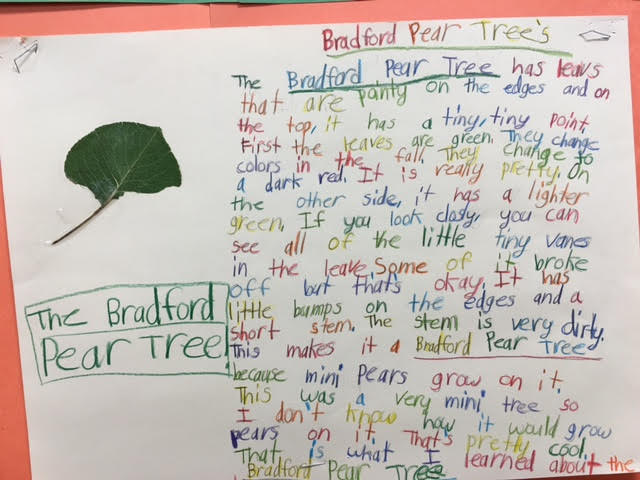
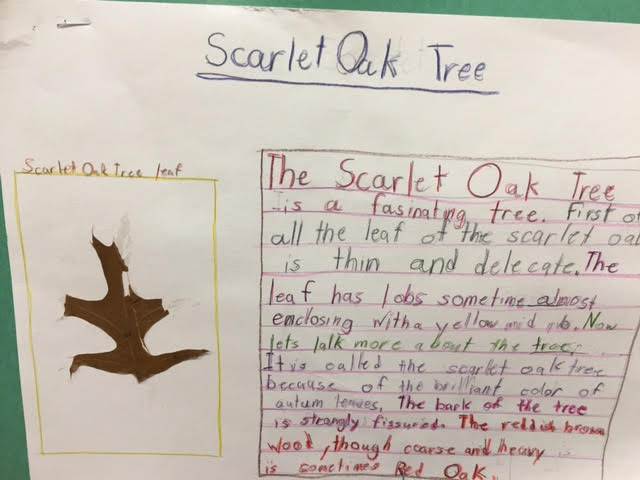
This fall, Ms. Sussman’s 4th grade class went out on an adventure in front of their Rushmore School where they discovered leaves of diverse shapes, sizes, and colors. Collecting the leaves, the class was excited to bring them inside for further study. Each leaf specimen was carefully analyzed, described, and identified to species with the use of dichotomous keys, then followed up with further research. Compiling all of their findings, the students created in-depth profiles for the different species of trees that they found (several of which are displayed below). The profiles of the trees found serve both as guides to tree identification and also to inform future studies of the individual trees in front of the Carle Place School and their phenologies as they change through the seasons in future years to come.
Into the Woods of Prospect Park
by Sam Adels, Nov. 2014
The forest habitat of Prospect Park offered a relevant outdoor classroom that aligned with the current curriculum, which focused on phenology for 2nd grade and ecosystems for 5th grade. During the class visit on November 2nd, students examined fall foliage with hand lenses, had close encounters with live decomposers from leaf litter, discussed the parts of a tree, and worked together as actors to perform the roles of the different parts of a tree. 5th graders explored the relationships between members of an ecosystem food web, examined various natural specimens, and met live decomposers including worms, centipedes, pill bugs, and snails. The class visits familiarized the students with the habitat and ecosystem of Prospect Park’s forest and prepared them to explore it first-hand the following week.
Agreeable autumn weather welcomed students into the forest in search of different species of insects, birds, and trees, with an emphasis on how they interact. Students rotated throughout stations to study the elements of the forest ecosystem in-depth. One student observed, “Today I had fun because I got to observe Prospect Park ecosystem. It’s the only forest in Brooklyn.” One station examined decomposers under rotting logs. A second station compared different species of trees. The third station hiked through the forest habitat. The students got dirty and found plenty of insects in the soil helping plants decompose.
Ms. Lyons-Mayers and Ms. Small empowered their students to learn about and enjoy the last remaining forest in Brooklyn. Students in Ms. Small’s class wrote essays about their forest exploration. One student wrote that, “Now I know that sometimes instead of staying inside watching TV, I can go outside and discover things in nature.” According to Ms. Small, “They can’t wait until spring for another visit.”



